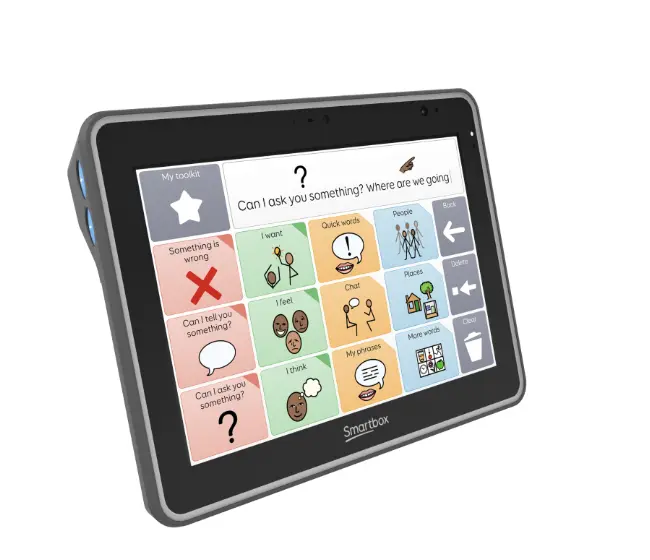How Do I Choose the Right AAC Device?
Choosing the right Augmentative and Alternative Communication (AAC) device can feel overwhelming, especially with the variety of options available. This guide will help you navigate through the selection process by breaking it down into manageable steps, ensuring you find the best fit for your communication needs.
Understand Your Communication Needs
Assessing the individual’s specific communication needs and challenges is the first critical step in choosing the right AAC device. Take the time to understand how the individual communicates naturally and identify the gaps that need to be filled.
Consider whether they require support for basic needs like requesting items or if they need advanced options for expressing thoughts and ideas. This assessment will provide valuable insight into which features and functionalities are necessary.
Additionally, it’s important to evaluate their current skills and abilities. For instance, if they have limited motor skills, it may influence the type of input methods you consider, such as touchscreens, switches, or eye tracking.
Engaging with the individual and involving them in discussions about their preferences can also be beneficial. Understanding their feelings about communication can guide you in selecting a device that they will feel comfortable using.
Explore Different Types of AAC Devices
When it comes to AAC devices, the range of options can be quite expansive. Familiarize yourself with the two primary categories: light tech and high tech. Light tech devices, such as picture boards and communication books, are often more accessible and immediately usable.
On the other hand, high tech AAC devices offer advanced functionalities including speech generation and dynamic displays. These devices can adapt to the user’s needs but may require more time to learn. It’s crucial to weigh the pros and cons of both types according to the user’s situation.
Researching specific brands and models can also provide insight into what might work best. Look for reviews and testimonials from other users to gauge effectiveness and satisfaction.
Don’t overlook the possibility of hybrid devices that offer a combination of both light and high tech features. This provides versatility while catering to various communication scenarios.
Consider User Friendliness
User friendliness is paramount when selecting an AAC device. If the device is easy to navigate and operate, the user will be more likely to engage with it effectively. Evaluate whether the buttons or icons are intuitive and accessible, especially for those with physical limitations.
In addition, consider the learning curve associated with each device. Some devices may require significant training for both the user and the caregivers, while others may be more straightforward to implement. A device that is too complex can deter usage.
Testing devices for their user experience is advisable. Spending time in a familiar environment while interacting with the device will help assess how well the individual can adapt to it.
Assess Portability and Durability
When choosing an AAC device, assessing its portability and durability is essential. Consider how often and where the device will be used. If it will be taken outdoors, durability against weather elements should be a priority.
Portability becomes especially important for individuals who travel to and from school or various activities. Lightweight and compact devices are often preferred, as they can be easily transported without sacrificing ease of use.
Ensure that the AAC device can endure daily wear and tear. A robust design can significantly impact the longevity of the device, reducing the need for replacements and allowing for consistent use.
Seek Input from Professionals
Consulting with professionals who specialize in AAC devices can provide invaluable guidance. Speech-language pathologists or AAC specialists have the skills and experience to recommend devices that suit specific needs.
In addition to their expertise, they can also offer insights about the latest technology and potential funding resources. They can help you navigate potential insurance coverage or grants that cover AAC devices.
Don’t hesitate to ask for a thorough assessment. Professionals can help evaluate communication needs, making personalized recommendations that consider both the user and caregiver perspective.
Trial Different Devices
The trial phase is essential in the process of choosing an AAC device. If possible, utilize resources that allow you to test different devices before making a final decision. This hands-on experience is vital in understanding how each device will work in real-life situations.
During the trials, pay attention to how comfortable the user feels with each device. Are they able to express themselves easily? Do they seem frustrated or engaged? Their reactions will be telling.
Involve other family members or communication partners during this trial phase, as their input can provide additional context on how well the device supports communication in various settings.
Consider how each device can evolve with the user’s changing needs. Finding a device that can adapt over time can ultimately save you from having to start the process all over again.
Final Thoughts on Choosing Your AAC Device
Selecting the appropriate AAC device involves understanding your unique needs, exploring available options, and seeking support from professionals. By following these steps, you can make an informed decision that enhances your communication abilities.


